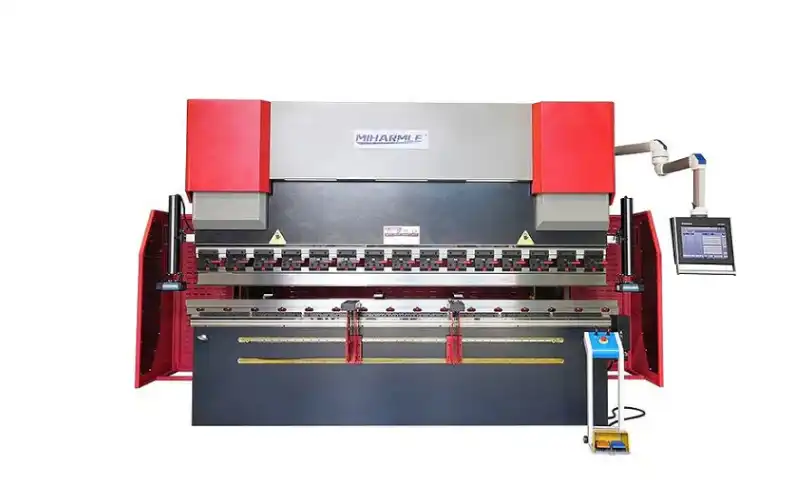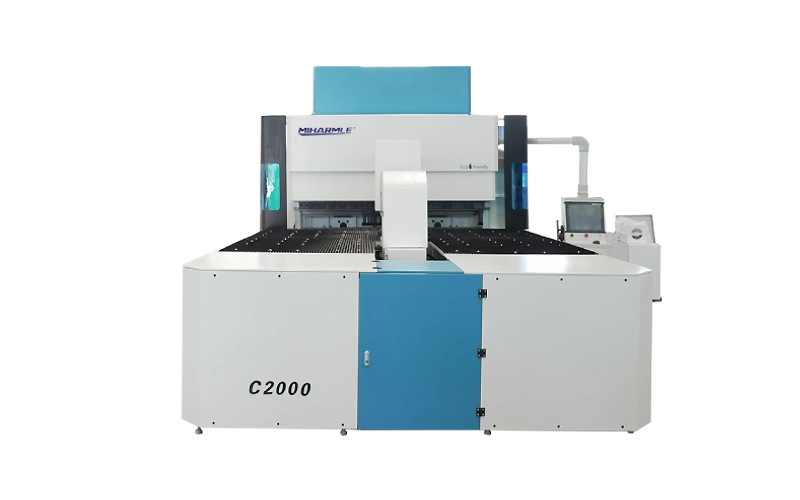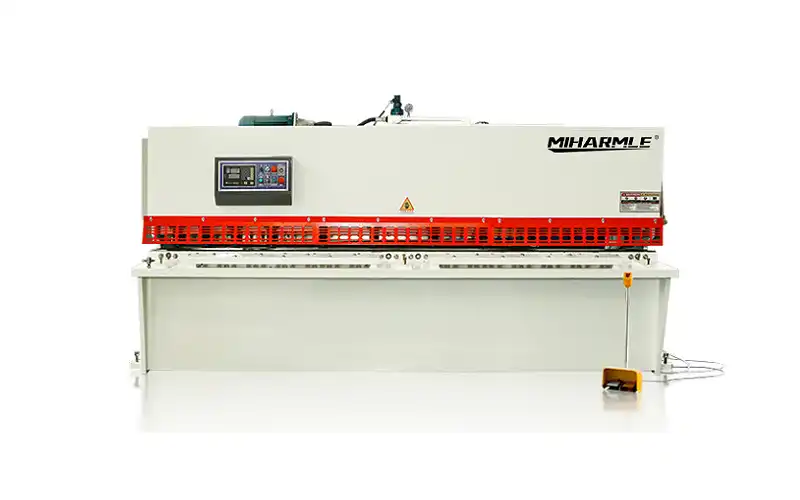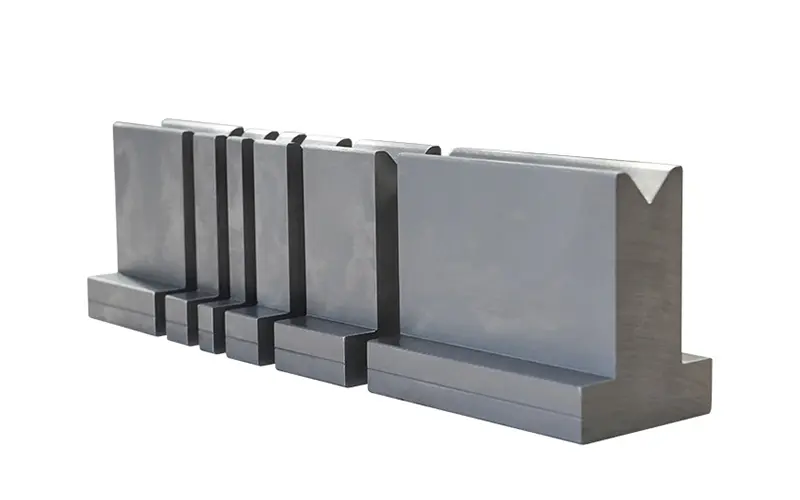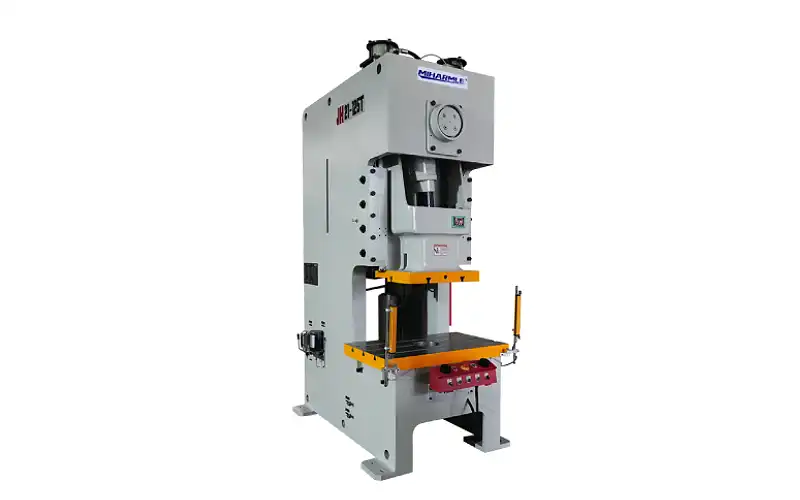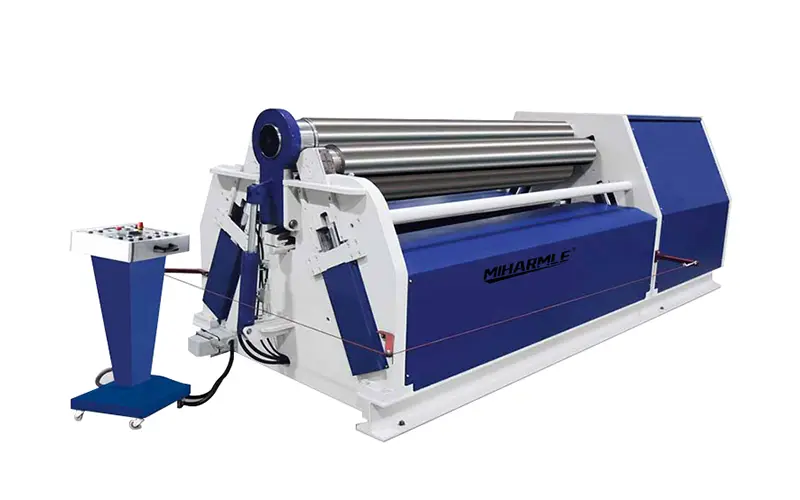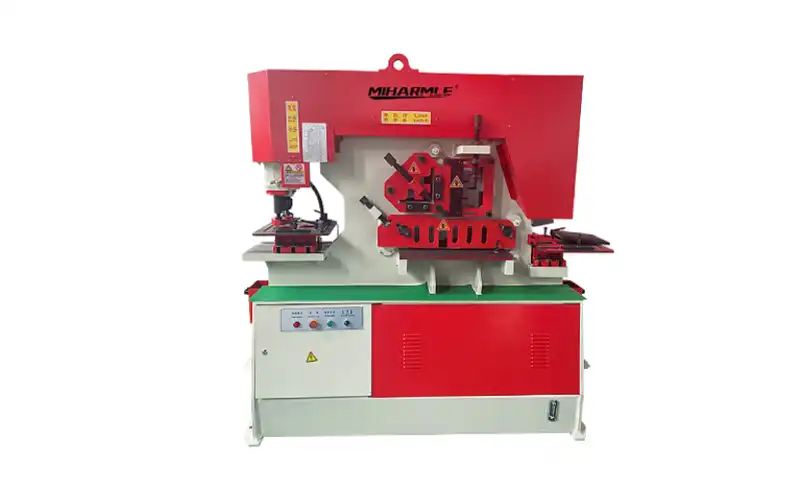1. What is a hydraulic press brake?
(1)The definition of hydraulic press brake
A hydraulic press brake is a mechanical device used in metalworking. Its main purpose is to carry out bending operations on sheet metal materials. It provides force and control through a hydraulic system. This system allows the operator to bend metal workpieces accurately.
A hydraulic press brake utilizes a fluid, usually oil, to generate force in hydraulic cylinders. First, the operator will press a control button. Then, the control valve opens and feeds fluid into the appropriate hydraulic cylinder. Finally, the hydraulic cylinder pushes a piston to apply force to bend the workpiece.
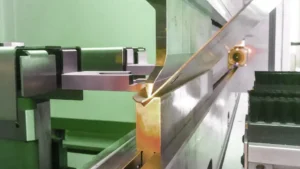
(2)Hydraulic press brake vs. mechanical press brake
During the long history of the sheet metal working industry, engineers have designed and adapted many types of press brakes. The purpose of these machines is to bend sheet metal.
To achieve this universal purpose, different types of press brakes use different methods. In the past, the mechanical press brake was the primary bending machine. The mechanical press brake is operated by means of a crank mechanism. However, it is limited by the mechanical transmission and control system. This type of machine cannot meet the requirements for precision and flexibility in sheet metal processing.
The origin of the hydraulic press brake can be traced back to 100 years ago. The biggest difference between a mechanical press brake and a hydraulic press brake is their transmission components. The hydraulic press brake uses a hydraulic pump to operate. The pressure generated by the hydraulic pump drives synchronized hydraulic cylinders. Then, hydraulic cylinders apply force to the material. So the press brake could bend the material to the desired angle.
The use of hydraulics allows for smoother operation and greater control. And more accurate overall bending lengths, even for larger, more complex parts, become a reality. Hydraulic brakes are the safest and easier to control than mechanical brakes. They typically allow for multiple speed settings. Hydraulic brakes also allow for more precise bending. This provides greater control when moving down and preparing for work.
The hydraulic press brake has been continuously improved over the last decades. Hydraulic press brakes are gradually replacing mechanical devices and becoming mainstream.

(3)New modern developments in hydraulic press brake
As technology advances, modern hydraulic press brakes are equipped with advanced CNC systems. These systems allow the operator to program the desired bending angle, force, speed, and other parameters. This provides greater precision, repeatability, and operational flexibility.
The development of the hydraulic press brake has made metalworking more efficient, precise, and flexible. It is widely used in various industries. As technology advances, the hydraulic press brake will continue to evolve. It will continue to meet changing market needs and technical requirements. But how does it work? We’ll tell you more about it in the rest of this article!
2. How does the hydraulic press brake work?
Next, we introduce the basic principle of the hydraulic press brake.
The hydraulic press brake realizes the bending operation by means of a hydraulic system. The principle of operation is as follows:
(1) Hydraulic System:
The most central part of the hydraulic press brake is a hydraulic system. This hydraulic system comprises one or more hydraulic cylinders, pumps, tanks, and control valves. The main function of the pump is to extract the oil from the tank. The oil pump will then transfer the oil through pipes to the hydraulic cylinders.

(2)Hydraulic Cylinder:
A hydraulic cylinder is a container with a piston. And it is filled with liquid. When the liquid enters the hydraulic cylinder, the piston is pushed and generates force.
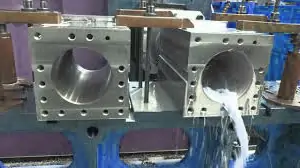
(3)Bending Operation:
In the bending operation, the workpiece is placed on the press brake table, and the press brake’s punch and die come into direct contact with the workpiece. The operator first presses the control button. The control valve opens. The fluid is then fed into the corresponding hydraulic cylinders.
(4)Applying Pressure:
As the fluid enters the hydraulic cylinder, the piston pushes outward. The piston will apply a strong force on the workpiece. The operator can adjust the press brake to suit his needs; this is achieved by changing the position of the piston and the control valve.
(5)Control Systems:
Modern hydraulic press brakes usually install advanced numerical control systems. The operator can program the control of the bending operation. The operator can set the desired bending angle, force, and speed parameters in the CNC. CNC hydraulic press brakes are very important machines.
The working principle of the hydraulic press brake is simple and effective. Precise and controlled bending operations are achieved by hydraulic force. This type of machine is usually characterized by high precision and repeatability. It is suitable for handling a wide range of materials and complex-shaped workpieces.
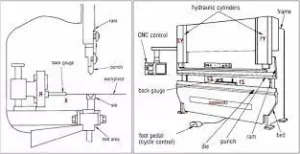
3. What is the hydraulic press brake’s advantage?
What is the hydraulic brake press’s advantage? Hydraulic press brakes offer several advantages over other types of press brakes, including:
- Bending force and control:
Hydraulics provide greater bending force. This allows the press brake to work with thicker sheet metal. The hydraulic system allows for precise control of the output force. Under these conditions, more accurate and consistent bending results can be achieved.
- Flexibility:
The press brake is suitable for working with various materials and complex shapes. By adjusting the parameters of the hydraulic system, bending operations with different angles, radii, and shapes can become a reality.
- Precision and repeatability:
One of the most important features of the hydraulic brake press is the possibility of reversing the stroke at any time. This feature makes adapting to different workpieces and process requirements more flexible. The different hydraulic brake press can accomplish different shapes, angles, and sizes of sheet metal work.
- Productivity:
Reversing the stroke at any time allows the operator to make adjustments and corrections quickly. The most important significance of this function in the sheet metal working production process is to increase the effective time ratio. This significantly reduces the press brake limitation time and increases the output per unit of time.
- Safety:
Hydraulic brake presses are usually equipped with safety devices. Devices such as grating protectors and two-handed operation buttons often exist on a hydraulic press brake. This, in a way, provides a great mechanism for press brake operator safety.
- Durability and reliability:
Hydraulic systems usually have a long service life. And it required relatively little maintenance. This makes the hydraulic press brake a reliable choice for long-term investments.
4. In which industries is the hydraulic press brake popular?
In the above chapter, we have described the main working principles and advantages of the hydraulic press brake. On this basis, the hydraulic press brake has many applications in the field.
So, what exactly are the industries in which the hydraulic press brake is often sight in sheet metal production? We’ll tell you more about it.
(1)Automotive Industry
These machines are integral in the manufacturing and assembly process of automobiles.
- Bending and shaping chassis parts
- Forming automobile bodies
- Fabricating internal structures such as dashboard frames
- Production of smaller parts like brackets and supports
(2)Aerospace Industry
The aerospace industry has stringent standards for precision and quality. And It also relies on hydraulic press brakes. The creation of various parts for the plane requires exact bending and shaping.
- Manufacturing of airplane wings and fuselage sections
- Fabrication of internal structural components
- Forming of landing gear parts
- Creation of smaller parts like brackets and mounts
(3)Construction Industry
In the construction industry, hydraulic press brakes are very important. Works use hydraulic press brakes to create structural elements of metal frames. And it also creates other parts required in building infrastructures.
- Production of steel frames and structural supports
- Fabrication of roofing and wall panels
- Creating HVAC components
- Shaping of gutter and drainage systems
(4)Shipbuilding Industry
Workers also used hydraulic press brakes in the shipbuilding industry. They can handle heavy and large pieces of metal sheet. This makes them ideal for forming a ship’s hull and other components.
- Bending and shaping large plates for ship hulls
- Creating internal structures and supports
- Fabricating parts for the ship’s propulsion system
- Manufacturing of smaller parts like brackets and mounts
(5)Manufacturing Sector
In the broader manufacturing sector, hydraulic press brakes have many uses. Many industries need to shape and bend metal for their products or parts. And they will find these machines valuable.
- Forming metal cabinets and enclosures
- Bending pipes and tubes
- Creating metal furniture frames
- Fabricating smaller components for various machines and equipment.
The transmission components are, of course, the most important core part of the press brake. However, the forces actuated by the valves must pass through the press brake dies to be effective. If you would like to learn more about this part, you are welcome to read our related articles.
In addition, if you would like to know more about our press brake machines, please visit our homepage for product information. And do you want to buy the best hydraulic press brake at the lowest price? We are eagerly waiting for your inquiry!

